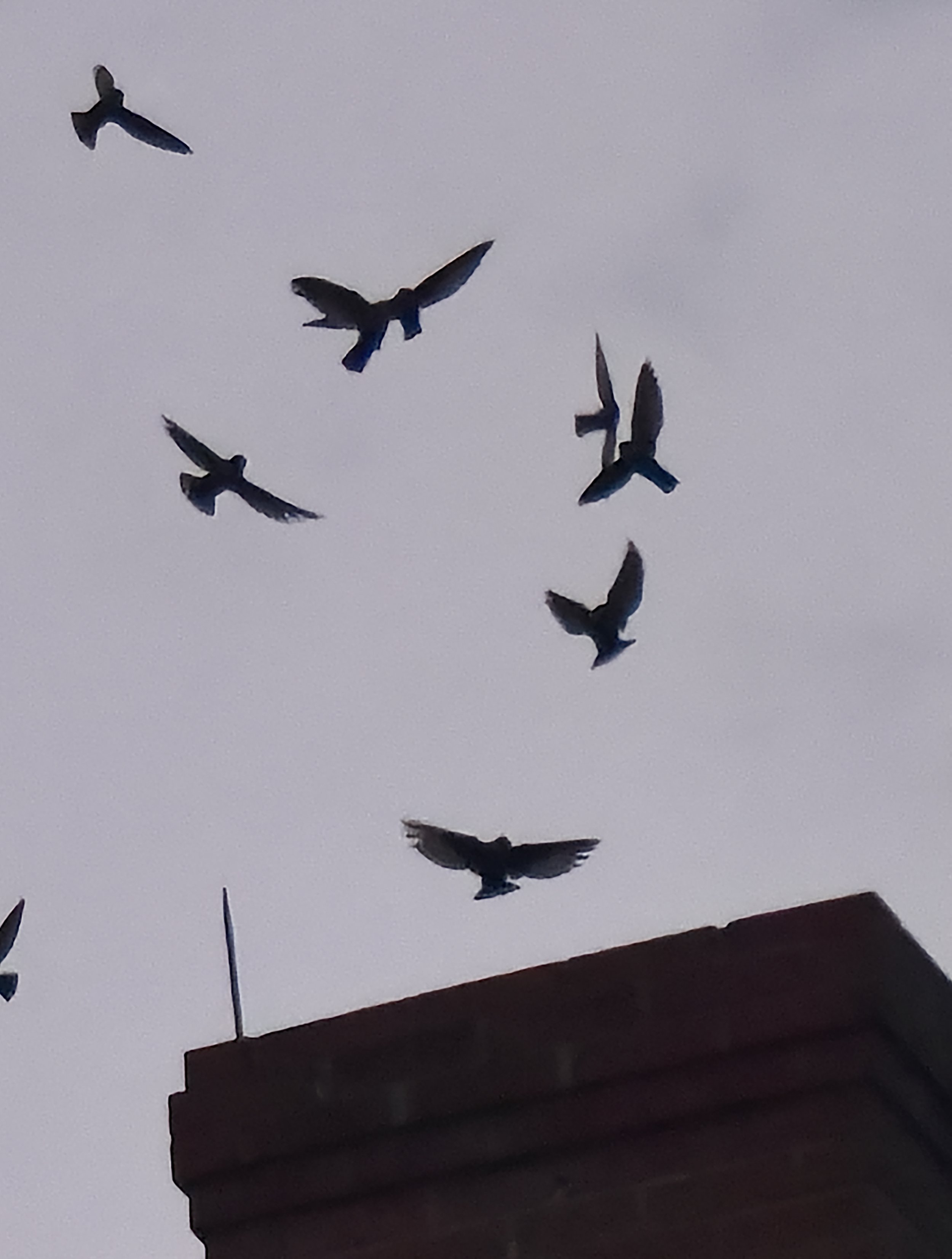‘Swifts of Waterbury’ flock to White Meeting House
May 27, 2022 | Video and photos by Gordon Miller | Story by Lisa ScagliottiChimney swifts return to roost in the brick chimney at the Waterbury Congregational Church earlier this week. Video by Gordon Miller
Waterbury’s White Meeting House has visitors flocking to it nightly but they aren’t arriving by foot or car and they aren’t using the front door.
In fact, the throng congregates more than three stories above ground. They mingle and circle before lining up to make a hasty entry to settle in for the night.
Passersby on North Main Street who take a few moments around dusk on a dry evening to look upward are treated to the late-spring ritual. Dozens of chattering, swooping, diving chimney swifts suddenly appear and circle the church steeple and roof.
Before long, they lock their sight on the brick chimney toward the rear of the Waterbury Congregational Church. Then, they dive.
Pastor Peter Plagge takes the annual visit in stride. “Yes, they're swifts, and no we don't think they're a big problem. They don't actually hang around for long,” he matter-of-factly answered when asked about them. “I think they've been around for about two weeks and have another two or three weeks before their babies have fledged and they fly off.”















Photos by Gordon Miller
A check with Audubon Vermont finds that Chimney Swift populations are steeply declining, with a 53% percent drop between 1966 and 2007 in the United States.
The organization is working with the Vermont Department of Fish and Wildlife on the Chimney Swift Conservation Project where the public is encouraged to get involved with observing swifts and reporting their activity using an online tool called eBird.
“Chimney swifts are considered a ‘Species of Greatest Conservation Need’ by the Vermont State Wildlife Action Plan, due to their population declines both in Vermont and throughout their entire range, and they are protected by Federal law under the Migratory Bird Treaty Act of 1918,” the Audubon site states.
“Their alarming decline is largely due to a loss of habitat and thereby roosting and nesting sites. Chimney swifts rely on masonry and flue-tile chimneys during nesting and migration seasons,” it explains.
The birds historically used large, hollow trees for nests and roosts, but they shifted to chimneys and other hollow structures after old forests were cut down.
“Now, Chimney Swifts rely almost entirely on human-made structures for nest sites. Because they cannot perch like songbirds, Chimney Swifts need deep shafts in which to raise their families and roost at night. Unfortunately, many chimneys have been capped or removed, which has reduced the number of sites swifts can nest and raise young,” according to Audubon Vermont.
Around Vermont, birding enthusiasts have built hollow towers to create new habitat for chimney swifts. Audubon Vermont lists four projects: At Burlington’s Oakledge Park; at North Branch Nature Center in Montpelier; in Rutland’s Giorgetti Park; and at the Vermont Institute of Natural Science in Quechee. The Audubon site has links to details on each of these projects with photos and some video clips as well.
In Waterbury, the Congregational Church no longer uses its brick chimney, Plagge said. The most activity it sees is in late spring-early summer as the avian visitors move in and raise their young and then disperse.
The Audubon site has links to its Chimney Swift Survey with instructions on how to submit observations of swifts and many other birds using the eBird website.
Northern Woodlands magazine published a feature about Chimney Swifts in its series The Outside Story in 2010. Here’s a link to the piece by Michael J. Caduto.
Meanwhile, Plagge enjoys watching the birds come and go as they raise their families each summer. He posted a video on the church website in 2020 showing the birds returning to the chimney and titled it “The Swifts of Waterbury.”
“They really are amazing to watch,” he said.
